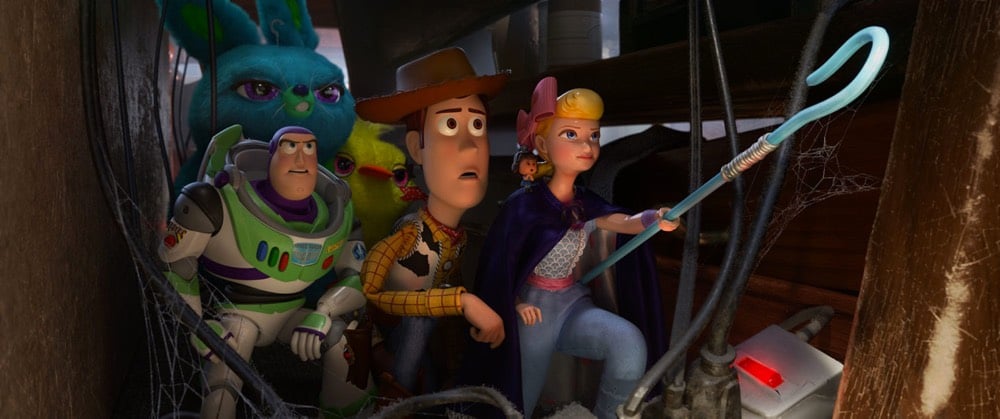Pixar’s AI Spiders
As I mentioned in a post about my west coast roadtrip, one of the things I heard about during my visit to Pixar was their AI spiders. For Toy Story 4, the production team wanted to add some dusty ambiance to the antique store in the form of cobwebs.

Rather than having to painstakingly create the webs by hand as they’d done in the past, technical director Hosuk Chang created a swarm of AI spiders that could weave the webs just like a real spider would.
We actually saw the AI spiders in action and it was jaw-dropping to see something so simple, yet so technically amazing to create realistic backgrounds elements like cobwebs. The spiders appeared as red dots that would weave their way between two wood elements just like a real spider would.
All the animators had to do is tell the spiders where the cobwebs needed to be.
“He guided the spiders to where he wanted them to build cobwebs, and they’d do the job for us. And when you see those cobwebs overlaid on the rest of the scene, it gives the audience the sense that this place has been here for a while.” Without that program, animators would have had to make the webs one strand at a time, which would have taken several months. “You have to tell the spider where the connection points of the cobweb should go,” Jordan says, “but then it does the rest.”
Chang and his colleague David Luoh presented a paper about the spiders (and dust) at SIGGRAPH ‘19 in late July (which is unfortunately behind a paywall).





Stay Connected